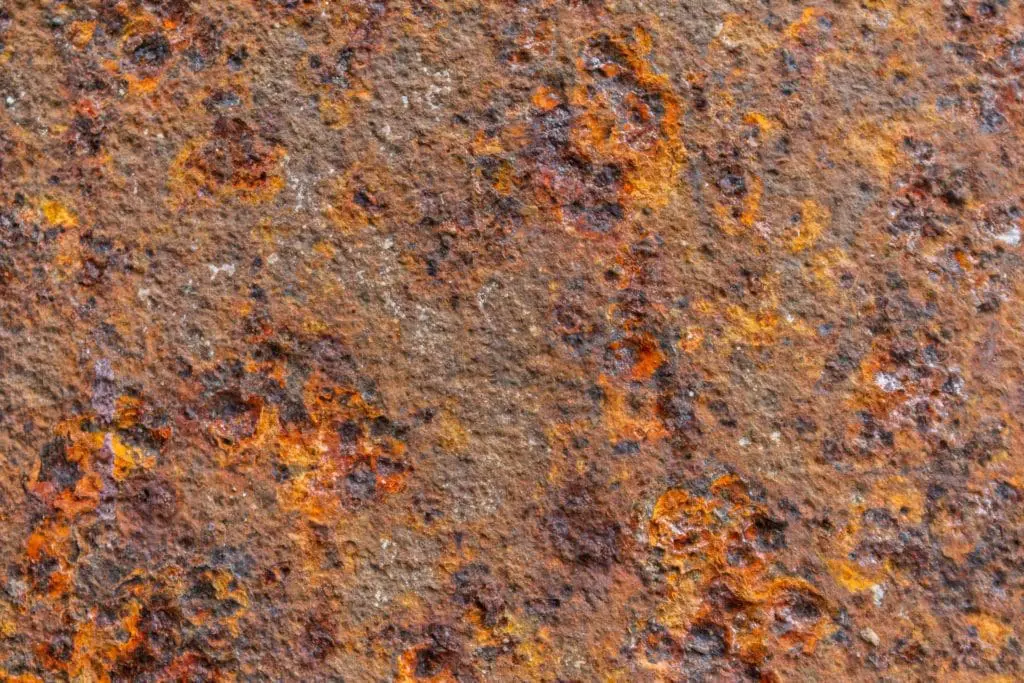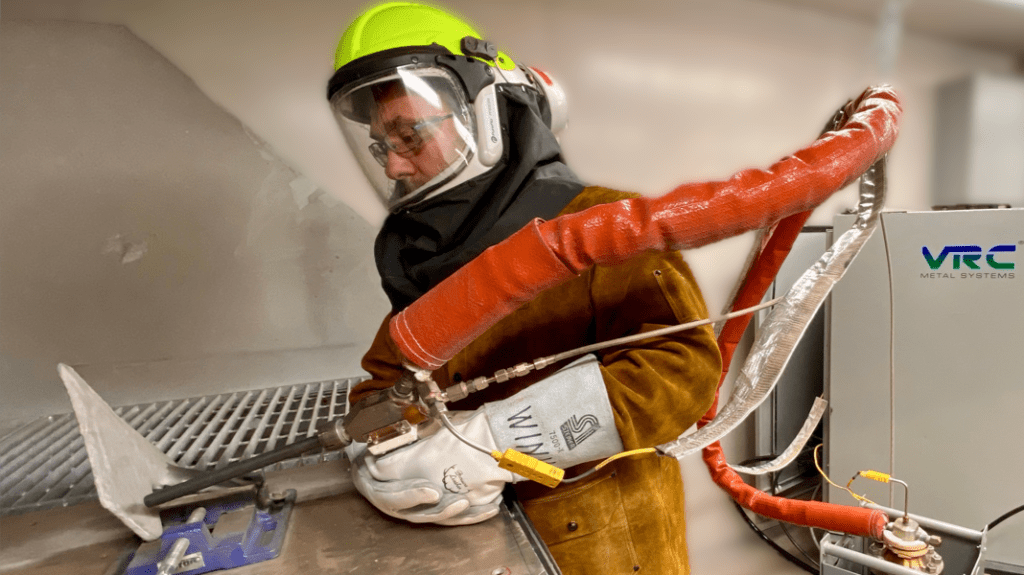Table of Contents
Rebuild and protect against corrosion with cold spray
Shipping, manufacturing, energy, and everyone else across the industrial sector have the same boogieman plaguing their machinery, different types of corrosion. That ugly chemical reaction can cost millions of dollars of problems. Not only is it expensive in upfront repair costs, but so is the downtime of the machine needing repairs. Luckily there is a solution — cold spray.
The cold spray coating process offers excellent corrosion prevention and repair without the risk that other thermal spray coatings and weld overlays present to completed components. Its high strength and lower input make it an excellent anti-corrosion solution for machines undergoing repairs.
The cold spray coating process is the safest and most cost-effective anti-corrosion solution on the market. For your future cold spray coating needs, VRC Metal Systems is here for you. Contact us today and let us keep your components safe from corrosion.
Corrosion and its various forms
In our respective industries, we build components to last and having an inadequate anti-corrosion coating, or worse-yet no anti-corrosion coating is an unnecessary liability. Corrosion does not just affect the aesthetics of your equipment, but it creates a safety risk as well.
The uniform orange-colored oxide that we find on mild steel is initially benign and easy to treat. Not all corrosion types are that simple to address, and more advanced types of corrosion can create nightmares. It’s always better to avoid corrosion in the first place, but let’s describe the types of corrosion that we find most commonly.

Pitting Corrosion
Pitting comes from several sources; one of its most common causes stems from an initial failure point in the protective coating of an object. The attach starts with a small pinhole in the surface and, from there, will begin to wreak havoc.
The corrosion will eat deep into the structure in a vertical attack and may remain relatively localized Other times it can branch outward weakening large sections of the substrate.
Because this corrosion starts so small, it is hard to spot before it becomes too late. If left unchecked, pitting corrosion will result in structural damage and necessitating complete replacement of the component.
Luckily, the cold spray coating process is the perfect solution to this problem. It is a very durable and highly dense coating that can protect a component’s surface from pitting corrosion. It can also be applied as either an anodic or cathodic protection coating, depending on the application, so the substrate below will never experience corrosion-prone conditions.
Intergranular Corrosion and Stress Corrosion Cracking
Intergranular corrosion occurs when impurities in the metal cause oxidation at the grain boundaries. When visually inspected, this corrosion will appear as extremely small cracks on the surface. The corrosion often has shiny clean-looking metal around it and can be missed when checked at a glance.
This corrosion doesn’t have the telltale bubbling or discoloration seen in pitting or uniform corrosion. While appearing structurally sound, this type of corrosion will affect the mechanical properties such as strength, stiffness, and cracking resistance in the metal.
Intergranular corrosion most often occurs from prolonged and extreme heating of a metal component. In particular, welding is a common cause of this effect, and it has a distinct term called weld decay. This cracking effect can also occur by a metal operating in a caustic environment, and when under tensile loading, this phenomenon is known as stress corrosion cracking.
Having a cold spray coating applied to welded materials, or those operating in a caustic environment is the best way to prevent intergranular and stress corrosion cracking. The low-temperature nature of cold spray coatings keeps excessive heat from being applied to a material, and yet it still has unsurpassed strength when compared to many other coatings.

Galvanic and Crevice Corrosion
Crevice corrosion occurs in areas where two surfaces mate, such as under a washer or the head of a fastener. As the oxygen content in the environment becomes depleted, the acidity begins to rise and corrode the surfaces involved. If left unchecked, this can lead to significant structural degradation, as well as pitting and other forms of corrosion.
Crevice corrosion is very similar to galvanic corrosion, which occurs when there is a transfer of electrons from an anode to a cathode. This effect is a common form of corrosion when mixing two metals that have different electrochemical potentials and therefore react with each other in the presence of an electrolyte (such as saltwater), as for example with aluminum and stainless steel.
While molybdenum disulfide (MoS2) coatings on hardware can help prevent this corrosion between the mating surface and the fastener, applying a cold spray coating can provide a more durable and reliable solution when applied to the mating surfaces.
The cold spray coating process could be an excellent solution for your mating surface challenges. The long-term quality of the protective coating in this instance is paramount since preventative inspections can be costly and even require disassembly of the component.
How does Cold Spray Coating improve upon other types of protective coatings?
The cold spray coating process provides superior corrosion protection over its competition in almost every form. While some coatings might be well suited for a particular niche, cold spray coating is exceptionally versatile.
- Sol-Gel Coating: While Sol-Gel is a good technology and has its uses, its propensity to delaminate raises severe concerns for long-term reliability.
- Powder Coating: Provides protection only as long as the surface remains sealed. Once the coating is damaged, it can promote crevice corrosion. Also, the requirement to heat the coating for curing can damage some sensitive components.
- Anodizing: Anodizing works well for non-ferrous metals; however, the harsh acids have a significant environmental footprint. The facility is also in a permanent location, and travel time means more downtime.
Cold Spray is the highest quality, most environmentally-friendly option for an anti-corrosion coating on the market today. It provides a strong and durable coating that doesn’t require excessive heat or harsh acids to apply to the component. The versatility of this coating is an excellent complement to its stellar performance as an anti-corrosion coating.

VRC Metal Systems is here for you
Why find yourself replacing corroded components or waiting for some time-consuming coating process to be completed when you have a better option? The cold spray coating process is fast, versatile, and, most importantly, it’s durable. VRC Metal Systems is here to help you with your cold spray coating needs, contact us today and let us give your components a longer life.

